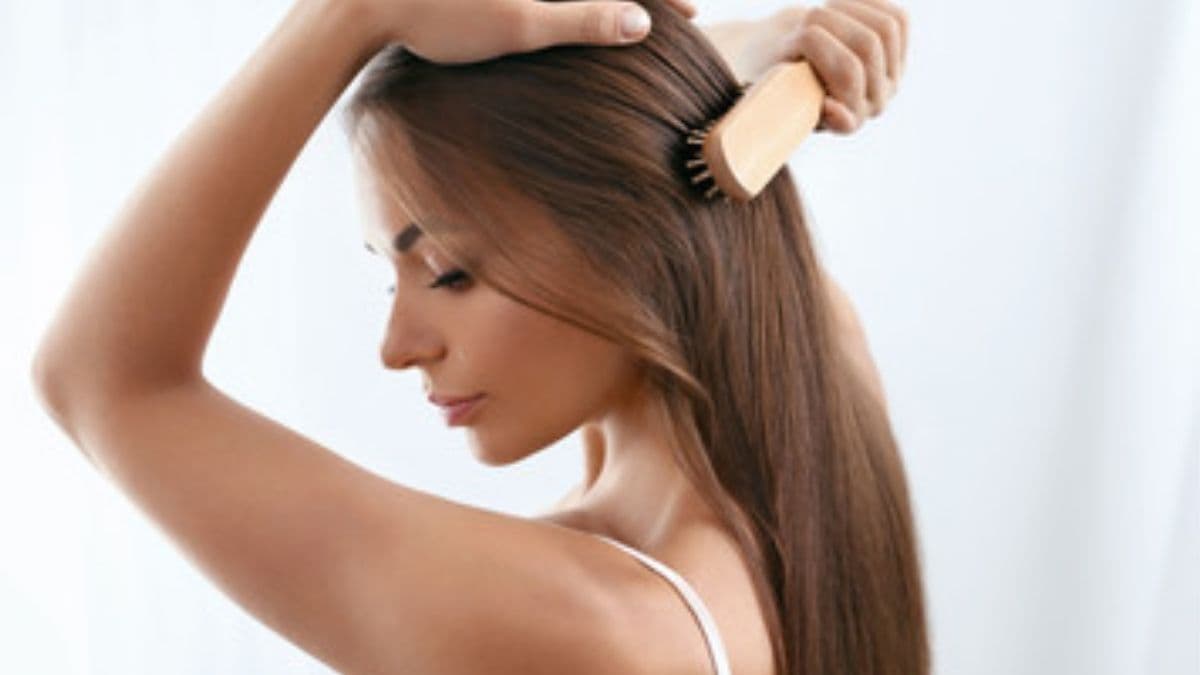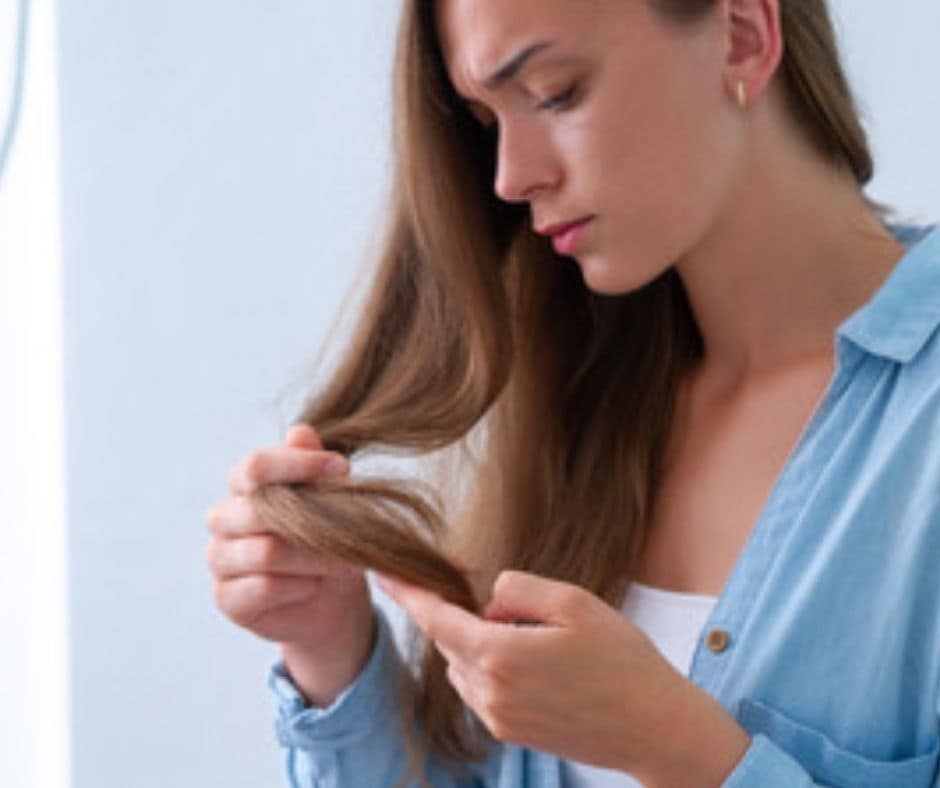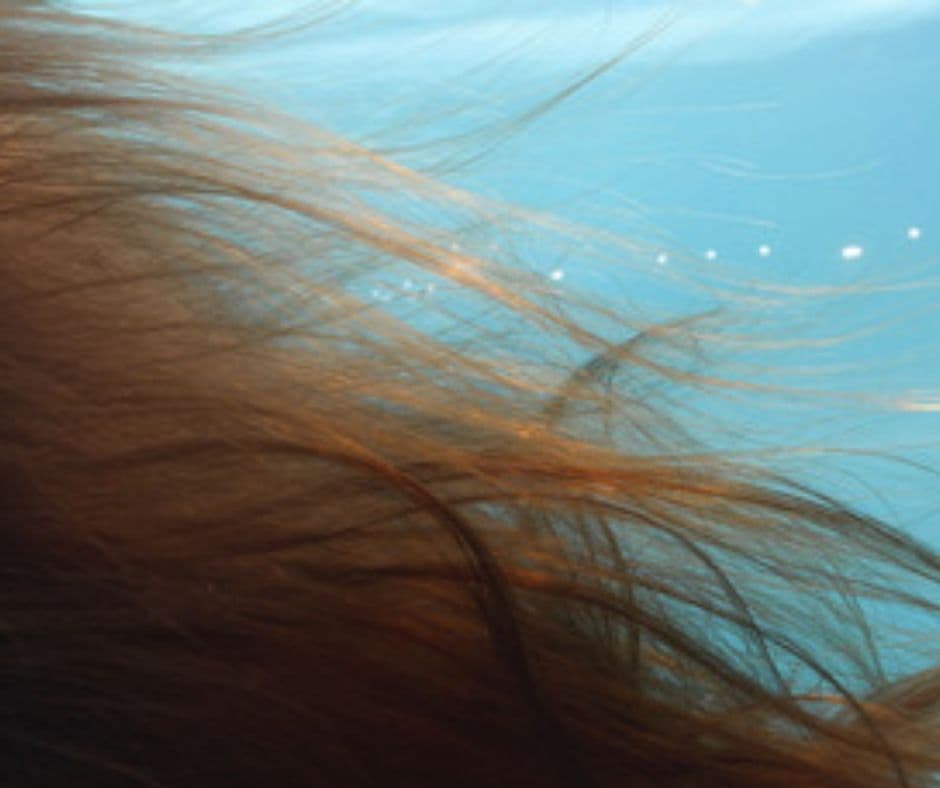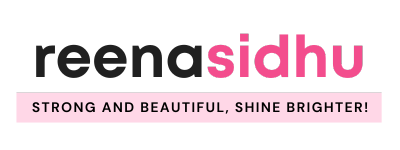How Do You Know If Your Hair Is Healthy?

Haircare is a broad phrase that encompasses our locks’ sanitation, nourishment, and cosmetics; it does not just relate to the hair on our heads. Haircare can also extend to other parts of the body, such as facial and body hair.
It’s just as vital to know what can irritate your hair and scalp as it is to buy and do all the things that are beneficial for your hair. To preserve the ideal bounce, luster, and fullness of your locks, it’s crucial to understand the symptoms of healthy versus unhealthy hair.
Introduction
Our hair can resist up to 3.5 ounces of pressure and can stretch up to 30% longer when wet. However, only healthy hair possesses such abilities; damaged strands are prone to breaking. You might not be able to tell if your hair is in good condition at first glance. There are, however, easy ways to assess this and take steps to get it back into shape.
It’s natural to blame damage when our hair doesn’t behave the way we want it to. However, the damage isn’t always the culprit. Detangling your hair takes longer than usual, but it doesn’t necessarily imply it’s harmed. Detangling issues might be caused by damaged hair, but they can also be caused by other circumstances.
Undamaged long and fine hair, for example, can be difficult to disentangle simply because it is prone to knots and fairy knots. It’s easy to assume that dull, lifeless hair is damaged, but this is another scenario where the obvious isn’t necessarily true.
The health of your strand of hair is important. If you have brittle hair, you might be experiencing a lot of breakage and shedding. There are some products that can help with this issue.
If you are looking for some healthy and natural products to try, here are some options:
Leave-In Conditioners – These products will help nourish your hair from the inside out and give it a shinier look. They also contain ingredients that will make your hair follicles stronger, healthier, and more manageable. The best leave-in conditioner for brittle hair is one that contains coconut oil or avocado oil as the main ingredient.
Brittle Hair – This type of hair has a high level of protein in it which causes it to become very dry and brittle when exposed to heat like straighteners or curling
How do you know if your hair is unhealthy?

The most common indications of hair damage are rather simple. There are key things to remember. We have listed some examples you are familiar with to know if your hair is unhealthy or not.
Hair that is silky and reflects light is healthy hair with closed, well-nourished shafts. As a result, it may appear gleaming in the appropriate lighting. If, on the other hand, your hair lacks luster even when exposed to bright light, you may have unhealthy hair. Damaged hair may be over-damaged, so even after a deep-conditioning treatment, it may not attain much shine.
- Tangles and Frizzes
As previously stated, healthy hair allows your fingers to glide over it easily. If you run into some problems along the way, your locks may be broken or unhealthy. The cuticles of healthy hair will be flat, and the strands will slide against one other. Unhealthy locks, on the other hand, may have elevated cuticles. If this is the case, your hair may be more prone to frizzes, tangles, and finally breaking.
- Weakness
Fragile locks are the polar opposite of elasticity-rich hair. When you pull on your hair with a light tug, it should not simply snap. Damaged hair may also fall out easily when brushed or combed.
- Unattractive appearance
If your hair is dull, floppy, or lifeless most of the time, you most likely have damaged hair. It can occur as a result of excessive exposure to chemicals or pollutants.
- Extremely thin hair if you find your hair is on the thinner side, and it becomes thin all over, it’s a sign that you have damaged hair.
What does healthy hair feel like?
Haircare is a broad phrase that encompasses our locks’ sanitation, nourishment, and cosmetics; it does not just relate to the hair on our heads. It’s just as vital to know how healthy your hair looks as it is to buy and do all the things that are excellent for your hair. It is so critical to be aware of the indications of healthy hair.
- Your Hair Holds Wetness
Maintaining good hair health necessitates adequate hydration. Your strands may dry out and break if you don’t give them enough moisture. The ability of your natural hair to retain moisture is one of the signals that it is healthy. A healthy hair cuticle can lay flat and seal in the nutritious elements you’ve put to your hair.
Porosity refers to your hair’s capacity to absorb and retain moisture. Damaged, unhealthy hair, as well as poor hair care habits, can result in hair that is excessively and persistently dry.
Excessively dry hair can tangle, break, and cause other problems. Heat, chemicals, and other destructive equipment you use on your hair can permanently harm your strands both inside and out. The hair cuticle will be damaged and elevated as a result of the damage. Furthermore, a damaged hair cuticle will have gaps and breaks throughout, making it harder for your strands to retain moisture.
- You have and maintain a hair care regimen that is consistent
Creating a regimen is a helpful and simple strategy to keep healthy strands and continue good hair care habits. If you do have a hair care routine that you stick to, you’re on your way to having healthy natural hair. You may create a nighttime hair care routine to assist with hydrating, styling, and maintaining your hair. Regardless, having a consistent hair care routine that yields desirable results is a strong sign that your natural hair is in good shape.
- Dandruff-Free
Dandruff is one of the most common scalp disorders, and those who suffer from it know how miserable it can be. It can make you self-conscious about your physical appearance. Dandruff is the shedding of dead skin flakes by a dry scalp. Dandruff can be caused by various things, including serious health issues or hormonal abnormalities. They can show up on even the cleanest of persons. You’re less prone to experience these annoying dry flakes if your hair and scalp are healthy.
- Your hair is healthy if you experience shrinkage.
Many naturals aim to keep shrinkage to a minimum or avoid it altogether. Shrinkage, on the other hand, can be a wonderful thing to have and could be a sign of good hair health.
What exactly is shrinkage? When your natural curl pattern coils up to its full shape, it takes on a contracted form called shrinkage. It’s also what gives curly and kinky hair their distinct looks and qualities, as well as the illusion of shorter hair than it is.
Shrinkage indicates that your strands have been properly hydrated and are returning to their original shape. It’s also a sign of healthy suppleness. Because the internal structure of damaged hair strands has been disrupted, they often exhibit a looser curl pattern than usual. This is especially obvious in heat-damaged hair, and some straight sections may be visible.
- From root to tip, your hair retents its thickness
When your hair seems full from root to tip and does not abruptly thin out towards the ends, this is one evident sign of healthy natural hair. Dense hair from the roots to the ends means you’re keeping a fair quantity of length and not breaking your ends (or roots). Haircare behaviors such as harsh detangling, friction from clothing, and a lack of moisture are just some examples of hair care habits that can harm your hair’s health and reduce its thickness.
Brushing your hair can also help you determine whether or not your hair is actually healthy.
The amount of flexibility in the hair is one method to tell. If you can extend your hair to its entire length with a comb or brush without it breaking, you have healthy hair.
- It’s increasing, even if it’s not at a fast pace
Hair growth from the scalp indicates healthy hair; if it grows at a rate slower than a quarter-inch per month, something is wrong internally. This, along with excessive shedding, could indicate an internal problem, such as a vitamin shortage, a thyroid condition, or a bad reaction to a medication. In contrast, if you observe around a quarter to half-inch of hair growth per month or so, your hair is still in good shape.
Though you may not notice how quickly your hair grows, if your hair has stopped growing for a while, you should consult with a doctor.
- Your hair isn’t prone to tangling
Tangled hair may be painful and can also do a lot of damage if you try to struggle through the tangles and break your hair.
When hair begins to split, it continues, resulting in knots and breakage. You won’t get split ends if you keep your hair healthy by obtaining regular trims.
- Hair fall is kept to a minimum
For the most part, hair fallout is unavoidable. The amount of hair, on the other hand, should not be overbearing. When brushing or shampooing your hair, pay careful attention. Inspect your pillow for hair fall after a good night’s sleep; it should be minimal. Your hair is probably in good shape if you don’t have a handful of shed hair after bathing it, or if your pillow is mostly clear of fallen hair.
- Your strands are elastic and bounce back
If your strands can bounce back to their coiled-up form after stretching or other forms of manipulation, that’s another indicator your natural hair is healthy. This is also known as the elasticity of your hair. Healthy hair should be able to endure a certain amount of manipulation (such as combing) without snapping or breaking. The amount of protein in your hair affects its flexibility.
Protein is the building block of your hair, and it is the protein that provides its strength and structure. If your hair breaks off readily even with moderate manipulation, it’s a sign that it’s weak and needs protein. Monthly protein treatments are an excellent way to maintain your hair moisturized and protein-balanced.
How can you tell the quality of your hair?
If your scalp is flaking, it’s likely to dry and in need of a gentler, hydrating shampoo like one of our formulas. They’re not only devoid of sulfates and parabens, but they can also be tailored to a dry scalp, ensuring that your hair is thoroughly cleansed without being stripped of its natural oils.
But what if your scalp is greasy and flaky at the same time? Product and oil buildup caused by infrequent or incorrect washing can cause a variety of symptoms. In such a scenario, we propose to include the oil control and soothe scalp hair objectives in your recipe to help regulate excess oil, reduce buildup, and soothe scalp irritation.
Following some hair tests, you’ll most likely discover that your hair is a combination of several types: curly yet porous or fine but excessively dry. In either case, knowing your hair type will help you make better and easier hair care selections so that your strands always look and feel their best.
What does healthy hair consist of?
While genetics play a part, several other things play a role in the health of your hair and your overall hair care routine is all-important in keeping your crowning beauty in good shape. You might be wondering just about what healthy hair consists of, here are a few:
- Every day your hair shed a few strands.
Hair grows in cycles, with each follicle going through a different stage of growth that can last anywhere from two to eight years. The strand falls out once that period has passed, and new hair grows in its place. For the majority of people with good hair, this means that 80-90 percent of their hair grows at once, and they can anticipate shedding up to 100 hairs per day. If you’re losing more than that regularly, it could be a sign of a dermatological disease or another health concern, and you should see a doctor.
- It’s simple to untangle.
Brushing through a closed, healthy cuticle is easier due to its smooth surface. Hairs tend to get snagged on one another and produce tangles when the cuticle is high and unhealthy. The rough structure of the hair’s outer layer makes separating each strand much more difficult, and when it does, you know your hair is in good shape.
- Frizz
Frizz develops when water seeps through the sponge-like shaft behind the cuticle, which is more likely when the cuticle is broken and lifted. Moisture has a harder time breaking through the cuticle and being absorbed when it is flat and tight to the shaft. Healthy hair is less sensitive to environmental dampness.
- Breakage to a minimum.
Excessive breakage indicates that your hair is unhealthy. Overworked and over-exposed tresses become brittle and readily break off, leaving harsh raw ends all over the place. Check the tresses around your face to see how they’re holding up, as they’re the ones that get the most heat styling and suffer the most damage.
What causes unhealthy hair?
When it comes to our hair, one thing we can all agree on is that hair damage is never a good thing. Whatever your ultimate hair objectives may be, I believe we can all agree that having dry, brittle strands that split and break off, regardless of hair type, color, or cut, is never a desirable thing.
Unfortunately, our regular hair care routines are often the source of the most harm to our tresses (heat, style, harsh brushing, sun damage, and poor washing), which is why it’s critical that you do not only care for just your hair but that you do so properly.
Your body, mind, and hair can all suffer as a result of a poor diet. It is also possible that your diet is to blame if your hair lacks shine, appears weak, or appears thinner. There are a variety of dietary deficiencies that can cause hair damage, but the two most frequent are protein and nutritional supplement deficiencies.
Processed food diets are linked to an increased risk of health problems, and the same is true for your hair. The problem with most processed foods is that they frequently lack natural components, instead of relying on chemicals and preservatives that, while delectable, offer little to no nutritious value to your body.
The environment, particularly pollution and the weather, can have an impact on the condition of our hair. Except you live in a very harsh climate, this is unlikely to be the main reason for your damaged hair.
Certain hairstyle procedures might degrade the quality of your hair and even cause thinning. For example, extremely tight braiding techniques can pull on the roots so hard that the hair is yanked out and the follicle is injured. A follicle that has been injured is less likely to develop a healthy, dense new hair fiber.
How to tell if your hair is healthy with water?

The sink test is a method of determining how porous your locks are. Damaged hair shafts absorb moisture easily because they are weak, whereas healthy hair is quite solid. Pluck three strands of hair from your head: one from the top, one from the back, and one from either side to do the sink test. Place the hair strands in a pitcher of water. If the strands float, they’re in good shape. They will be considered harmed if they submerge.
Conclusion
To avoid any future difficulties, use proper hair care practices as soon as you discover the indicators of unhealthy locks. Hair and scalp problems might linger for years, and you’ll have to put up with wearing less-than-ideal hair for that time. Multiple factors might cause your hair to suffer and deteriorate, which can take years to fix.
If you have unhealthy hair, you may be able to improve it by using proper hair care practices, diets, and maintained it daily. Maintaining adequate hygiene and overall wellness is just as vital as caring for your locks.
Remember to shampoo and condition your hair regularly using organic substances that will not hurt you: keep in mind that the ingredients in shampoos and conditioners are critical to your hair health and your scalp, so choose your daily hair care products wisely. Excessive bleaching and hair coloring are two prominent causes of hair damage and elasticity loss. If you’re still unsure, consult a hairstylist.
